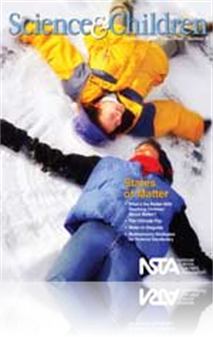All Science and Children resources
Journal Article
What’s the Matter With Teaching Children About Matter?
When it comes to learning about solids, liquids, and gases, children often bring interesting yet inaccurate ideas to the topic. When children’s ideas conflict with the concepts we seek to teach, they interfere with learning. Therefore, we must cons...
Journal Article
Science Shorts: Comparing Liquids
Children experience the physical properties of liquids as they watch raindrops run down a window, observe how insects can walk on water, and notice how the “shape” of a liquid matches the container in which it is held. Thinking about similarities...
Journal Article
Methods and Strategies: Concept-Focused Teaching
One of the main problems we face in science teaching is that students are learning isolated facts and missing central concepts. For instance, consider what you know about life cycles. Chances are that you remember something about butterflies and stag...
Journal Article
The Early Years: Air Is Not Nothing
Children usually begin to understand that a substance called air is all around us after age three, but they don’t grasp that air is matter until age five, or even older. They may learn that “air is a gas” but have difficulty naming the substanc...
Journal Article
Perspectives: Using Analogies in Elementary Science
Using analogies in science classrooms helps students make connections between everyday life and the concepts we are trying to teach. Analogies help students form a bridge between their existing knowledge and new knowledge. Humans use analogical reaso...
Journal Article
Editor’s Note: States of Matter
There is a common misunderstanding of chemicals and chemistry. Chemicals are “bad.” Chemists are a nerdy set in the same category as those zany physicists, except that chemists work with more dangerous materials—“chemicals.” A change in att...


